- Home
- Don Pendleton
Frontier Fury Page 3
Frontier Fury Read online
Page 3
Brognola was waiting on the farmhouse porch with Barbara Price—the Farm’s mission controller—when Bolan got there, slowing into his approach. A stocky farmhand with a military buzz cut waited two steps down, to spirit Bolan’s rental car away and out of sight once he had cleared the driver’s seat.
“Good trip?” Brognola asked, as Bolan climbed the porch steps and shook his hand.
“Normal,” Bolan replied.
It was the standard small-talk introduction to his latest job. He hadn’t flown across country from San Jose to Washington, then driven south from there to Stony Man, to talk about the Shenandoah scenery.
“Okay,” Brognola said. “We may as well get to it, then.”
But first, they had to reach the War Room, situated in the farmhouse basement, theoretically secured against direct hits with conventional munitions. That remained untested, and if all of them were lucky, it would stay that way.
They rode the elevator down and disembarked into a corridor that led them to their destination, through a coded secure access door. Aaron “the Bear” Kurtzman was waiting for them in the War Room. He was seated in the wheelchair that had kept him mobile since a bullet clipped his spinal cord, during an armed assault on Stony Man.
Bolan shook hands with Kurtzman, then moved around the conference table to take a seat to Brognola’s left, while Barbara took the right-hand side. Kurtzman remained at the keyboard that controlled the War Room’s lights and AV apparatus for events such as the current mission briefing.
“Akram Ben Abd al-Bari.” Brognola managed the pronunciation flawlessly, smiling grimly as he said, “You recognize the name, of course.”
“It rings a bell,” Bolan replied.
Brognola didn’t need to tell those present that al-Bari had been among the FBI’s Ten Most Wanted fugitives since 2001, with a four million dollar price tag on his head, dead or alive. Although the names on that dishonor roll were not officially prioritized, only al-Bari’s boss—known in the trade as O.B.L.—rated a higher bounty. Both had managed to evade manhunters during the Afghanistan invasion and remained at large, with open warrants naming some four thousand murder victims from the 9/11 raids and other terrorist events dating from 1993.
Behind Brognola, Kurtzman displayed revolving photos of al-Bari on the large screen. Like the human monster’s reputation, the images were several times larger than life-size. Bolan had seen them all before, including the grainy captures from the latest video that had been aired last month on CNN and BBC, promising hell on Earth for the American Crusaders and their lackeys.
“Also among the missing,” Brognola announced, “Ra’id Ibn Rashad, his number two.”
More photos appeared on the big wall-mounted screen. Rashad’s brown, bearded face was seldom seen on Western television, and while he didn’t rank among the Ten Most Wanted, he was close. One million dollars waited for the bounty hunter who could bring him in alive, or prove beyond the shadow of a doubt that he was dead.
Delivering his hands would do it.
Or his head.
“Big fish,” Bolan said, “but they’re still not in the net—are they?”
“No, you’re right,” Brognola said. “But now we have a good idea of where to drop our line.”
“That sounds familiar.”
There’d been countless leads on al-Bari, Rashad, and O.B.L. himself, over the years. One thing the tips all had in common was that none of them had panned out. Agents and mercs had died on some of those wild-goose chases. But most had simply ended in frustration, time and money wasted in pursuit of shadows.
“Sure it does,” Brognola said. “Except…”
Another photo came up on the screen. This one revealed al-Bari and Rashad in conversation, over plates of food Bolan couldn’t identify. The angle of the shot made him suspect it had been snapped clandestinely.
“That’s new?” he asked.
“Taken ten days ago,” Brognola said.
“Location?”
“Somewhere in Pakistan’s North-West Frontier Province. We don’t have exact coordinates.”
That stood to reason. If the Pentagon could put their finger on al-Bari and Rashad, they likely would have plastered him with smart bombs and cruise missiles, then apologized to the Islamabad authorities at leisure—if at all.
Bolan could see where this was going.
“Someone has to go in and confirm it,” he said, not asking.
“Right. And take whatever action may be feasible, once confirmation is achieved.”
“Presumably with someone who can speak the language.”
“Absolutely,” Brognola agreed.
“Okay,” Bolan said. “Let me hear the rest of it.”
THE REMAINING DETAILS were quickly delivered. “Someone” had located al-Bari’s hidey-hole in northwest Pakistan, where he shared lodgings with Rashad and other members of al Qaeda. Some of them were only passing through—dodging pursuers, picking up their orders or delivering reports—but there appeared to be a constant staff of four or five top aides in residence, plus bodyguards.
How many guards?
No one could say, with any certainty.
After the briefing, Bolan went up to his usual room. Brognola, or someone acting on his orders, had prepared a CD-ROM containing biographical material on Bolan’s two main targets and his Pakistani contact, plus a summary of known al Qaeda actions since the group was organized in 1988. Born out of battle with the Soviets in Afghanistan, al Qaeda—“The Base,” in Arabic—was a fluid band of Sunni Muslim militants, founded by one Abdullah Yusuf Azzam. A bomb blast killed Azzam and his two sons a year later, in November 1989, outside a mosque in Peshawar. Suspects named in different media reports included the Mossad, the CIA, and O.B.L. himself. Officially, the case remained unsolved.
The rest was history. With O.B.L. in charge, warriors of al Qaeda rolled on to murder thousands, from New York and Washington to London and Madrid, Djerba and Casablanca, Istanbul and Aden, Nairobi and Dar es Salaam, Jakarta and Bali. The world was their battleground. Their stated goals: destruction of Israel, eradication of all foreign influence from Muslim nations, and establishment of a new Islamic caliphate.
In practice, that meant killing anyone who disagreed with them on any point of doctrine, or who was perceived to aid the group’s enemies. Bolan had faced al Qaeda members in the past and managed to survive, but this would be his first crack at the group’s top-level leadership.
Which brought him to the men themselves.
According to Brognola’s file, Akram Ben Abd al-Bari had been born in Cairo, in September 1951. His father was a pharmacist and teacher, from a long line of physicians and scholars active in radical politics. Al-Bari joined the Muslim Brotherhood at age fourteen, went on to study medicine and served in the Egyptian army as a surgeon, married and had two daughters. By 1980 he was rising through the ranks of the Egyptian Islamic Jihad, which merged with al Qaeda in 1998. Three years later, when American smart bombs leveled Taliban headquarters at Gardez, Afghanistan, al-Bari’s wife and daughters died in the rubble.
Al-Bari escaped and channeled his grief into rage.
Ra’id Ibn Rashad was another Egyptian, younger than al-Bari. Conflicting CIA reports claimed he was born in April 1960 or November 1963, but neither date was relevant to Bolan. Rashad was a suspect in the 1981 assassination of Egyptian president Anwar Sadat, but he’d dodged indictment in that case and fled to Sudan with other members of al-Bari’s Egyptian Islamic Jihad, later following his mentor into a merger with al Qaeda. FBI reports named Rashad as a guiding force behind two U.S. embassy bombings in 1988, which claimed 223 lives in Kenya and Tanzania, leaving another 4,085 wounded. Rashad had missed a spot on the FBI’s Ten Most Wanted list, but made the Bureau’s roster of Most Wanted Terrorists when that program was created after 9/11.
Neither target was a combat soldier, though Rashad had done his share of training in assorted desert camps. They weren’t guerrilla fighters in the normal sense, but both had prov
ed themselves die-hard survivors, living on the run for over a decade, while the combined military and intelligence networks of the United States and Great Britain tried to hunt them down.
That told Bolan that they were determined and had a very strong support system. He wondered, now, if either man suspected that their hideout had been blown. Beyond the knowledge that their deaths obsessed some operatives in Washington and London, did al-Bari or Rashad know that specific plans were in the works to kill them?
Bolan had no way of knowing for certain if Brognola’s information was correct, but the team at Stony Man Farm had never let him down before. Yet Bolan knew that every operation was a fluid, living thing.
At least until the final shots were fired.
Al-Bari and Rashad might know they’d been exposed, or they might simply crave a change of scene and slip away before he got to Pakistan. In which case, Bolan might be able to pick up their trail—or he might not.
Some of the burden rested on his native contact, one Hussein Gorshani. Brognola’s dossier said that Gorshani would turn thirty-four the following month. He owned a small repair shop in Islamabad, specializing in electronics, and had roughly quadrupled the country’s average per capita income of $2,900 over the past ten years. He also drew a modest paycheck from the CIA, which was a story in itself.
Pakistan is a self-proclaimed Islamic republic, and while about ninety-seven percent of its people subscribed to the faith, some Muslims were more equal than others. Hussein Gorshani belonged to the Shia minority, outnumbered four-or five-to-one by hostile Sunnis. Still, Gorshani’s dossier claimed that religious persecution had not sparked his decision to work for Langley. Rather, that had come about by slow degrees, as Gorshani observed his nation’s leaders drifting ever closer to covert support for O.B.L. and al Qaeda.
Gorshani had served four years in Pakistan’s army, rising to the rank of havildar, or sergeant. As a native of the North-West Frontier Province, he had served most of his time there, on border patrols with the paramilitary Frontier Corps. He was also trilingual, rated as fluent in Pashto, Urdu and English.
An all-around Renaissance man.
There were, however, two things that Brognola’s dossier could not reveal about Hussein Gorshani. First, despite his military training, there was nothing to suggest he’d ever fired a shot in anger at another human being. When the crunch came—and it would—could Bolan trust Gorshani to pull the trigger on one of his own countrymen?
The second question was more basic, but equally vital.
Could Bolan trust Gorshani at all?
Turncoats, double and triple agents were a dime a dozen in the murky realm of cloak-and-dagger operations. Every nation had its clique of spies, and the U.S. had more than most. Each and every spy network on Earth used bribery and blackmail to recruit from opposition groups, as well as from civilian populations.
Who could absolutely guarantee that Bolan’s contact wasn’t secretly working for Pakistan’s Intelligence Bureau, its Federal Investigation Agency, or some military outfit under the umbrella of Islamabad’s Directorate for Inter-Services Intelligence?
Answer: no one.
It was a risk that Bolan ran each time he set foot onto foreign soil, relying on a local contact. He had beat the odds so far, but that just meant that he was overdue to roll snake eyes.
Bolan’s less-than-comforting thoughts were suddenly interrupted by a cautious rapping on his door.
“OH, GOOD. You’re decent,” Barbara Price observed, as Bolan stood aside to let her in.
“Depends on who you ask,” he said.
“I guess it would.” She nodded toward the open laptop with Gorshani’s mug shot on the monitor’s screen. “We’re pretty sure he’s clean,” she said, as if reading his mind.
“And he’s the only game in town,” Bolan replied.
“That, too.”
“He’s not the one who blew the whistle on al-Bari and Rashad, though.”
“No,” she said, “he’s not. Langley won’t part with that name. They’ve supposedly got someone deep on the inside.”
“So, he could do the job himself,” Bolan suggested.
“That was Hal’s first thought, but Langley doesn’t want to lose him. After all, someone’s bound to replace al-Bari and Rashad after you take them out. As long as Mr. X is still in place, the Company can track al Qaeda’s leadership.”
“The greater good,” Bolan said.
“Right. But I’d still be happier if Langley wasn’t in the mix at all.”
Some people blamed the CIA for al Qaeda’s existence, noting that the Agency had funneled arms to O.B.L. and others in Afghanistan to help them slaughter Russians, back when O.B.L. was still a “patriot” and “friend” of the United States. In fact, some claimed al Qaeda didn’t exist at all, but had been fabricated by the CIA to keep those covert dollars pouring in.
“We take what we can get,” Bolan replied.
“Speaking of that,” she said, and reached for Bolan’s hand. But before going any further, Price paused and said, “Listen, this is serious. About Gorshani.”
“I know.”
“We’ve checked him out as far as possible, same as we always do—but this is Pakistan.”
“Meaning they’ve elevated subterfuge to art-form status?” Bolan said.
“Meaning it’s a bloody can of worms. The North-West Frontier Province makes Medellín look like Utopia. They stopped publishing casualty figures in 2004, when the tally became too embarrassing. And it’s not just the government versus rebels. Every village has at least one illegal arms dealer. In the cities, you can’t walk a block without tripping over Kalashnikovs and RPGs. They’ve logged more than twelve thousand arrests for gun-related crimes over the past three years, and that’s barely scratching the surface.”
“Sounds like Dodge City,” Bolan said.
“Dodge City on angel dust,” she replied, “with unlimited ammo and a side order of religious fanaticism. On top of which, if you can make it past the bandits and militias, we suspect the government is covering your targets.”
“If I didn’t know better,” he said, “I’d think you wanted me to pull the plug.”
“Who says I don’t?”
“Sounds to me like a conflict of interest.”
“You want it straight? I’ve been against this from the start, but I was overruled. Okay. I’m a team player. But it stinks.”
“A chance to cut the snake’s head off,” he said. “Or close, at least.”
“That’s how they’re selling it. But why can’t the Agency’s man come up with coordinates for an air strike? You want to tell me he can snap a photo of the targets, but he can’t jot down the longitude and latitude? Come on!”
“My guess would be he doesn’t want to go up with the others.”
“And are you supposed to recognize him, when you get there? What’s he gonna do, whip out his CIA decoder ring before you drop the hammer on him? And he’ll still be working as an asset undercover, after that? Somebody’s blowing smoke.”
“Maybe,” Bolan said. “But I can’t see through it till I’m on the ground.”
“I knew you’d say that,” she replied.
“What else can you predict?” he asked.
“A long night for the two of us,” she said, and offered Bolan a slow smile as she led him to the bed.
3
North-West Frontier Province, Pakistan: The Present
Fleeing over open ground meant there was nothing to obstruct the enemy’s sight line or spoil their aim. All Bolan and his contact had going for them now was speed, and the Executioner hoped his driver was equipped to make the most of it.
Crouched on the SUV’s rear deck, Bolan was crowded by a spare tire on his right—the driver’s left—but he had room enough to fight. And room enough to die in, if the APC’s machine gunner was capable of holding steady on a target at the far end of his killing range.
But not just yet.
The Jeep was Bolan’s fir
st concern, though. With only two men inside, and the driver fully occupied with his appointed task, the Executioner had the advantage. At most, the driver might fire pistol shots, but, then again, aiming would be difficult unless he dropped the Jeep’s windshield.
That left the passenger, whom Bolan took to be the officer in charge of the patrol. He couldn’t read the soldier’s face at four hundred yards, much less determine his rank, but the man was holding some kind of rifle, biding his time.
Bolan thought he’d give the lead pursuers something to think about, and began firing from a seated position. With elbows braced on knees, it was the best position next to prone for steady shooting, but that was, of course, from solid ground. Each time his driver swerved or hit a pothole in the pavement, Bolan lurched along with the whole SUV.
His first shot, therefore, may have been a miss. He saw the two Jeep-riders duck their heads, but saw no evidence of impact on their vehicle. The Jeep held steady, barreling along in hot pursuit.
For number two, still set on semiautomatic fire, Bolan aimed at the center of the Jeep’s windshield and squeezed the trigger. This time, it was nearly on the mark but high and slightly to the left, missing the rearview mirror by an inch or so.
Still, Bolan got the physical reaction that he’d wanted, smiling as the Jeep swerved wildly for a moment, slowing at the same time, while its driver tried to choose between the gas and brake pedal, guts or survival.
Bolan saw the shotgun rider turn and shout something at his wheelman. Whatever he’d said convinced the driver to accelerate despite incoming fire.
Behind the Jeep, the eight-wheeled APC was giving all it had to stay in the race. Its twin Russian-made ZMZ-49–05 V-8 engines strained to hit and hold the vehicle’s top speed, around fifty miles per hour. That was good time for patrolling or advancing on a line of rioters, but in a car chase it was almost bound to lose.
Almost.
Bolan observed the shotgun rider in the Jeep half-standing, lining up a rifle shot over the windshield’s upper edge. It wasn’t likely he would score the first time out, but there was always the threat of a lucky shot.

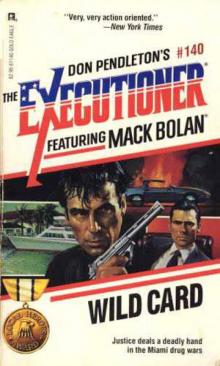 Wild Card
Wild Card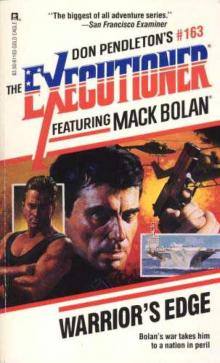 Warrior's Edge
Warrior's Edge Blood Vortex
Blood Vortex Lethal Vengeance
Lethal Vengeance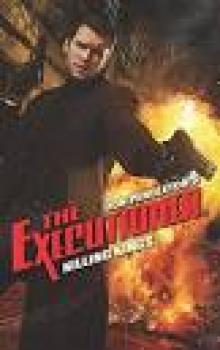 Killing Kings
Killing Kings Cold Fury
Cold Fury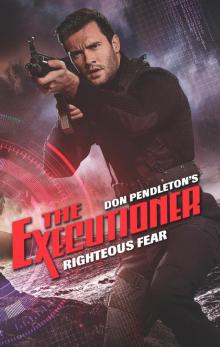 Righteous Fear
Righteous Fear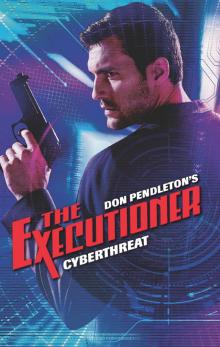 Cyberthreat
Cyberthreat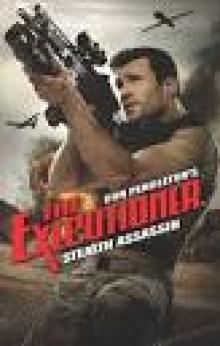 Stealth Assassin
Stealth Assassin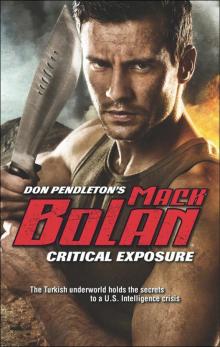 Critical Exposure
Critical Exposure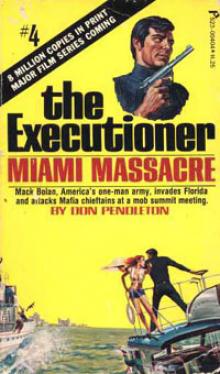 Miami Massacre te-4
Miami Massacre te-4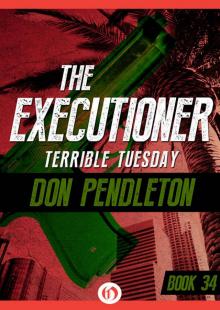 Terrible Tuesday
Terrible Tuesday Dying Art
Dying Art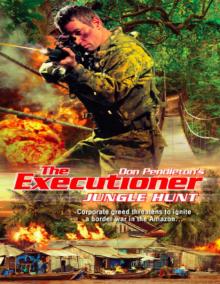 Jungle Hunt
Jungle Hunt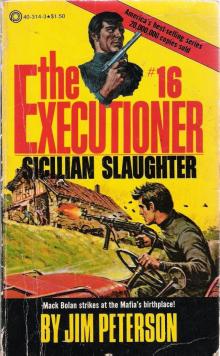 Sicilian Slaughter
Sicilian Slaughter Throw Down
Throw Down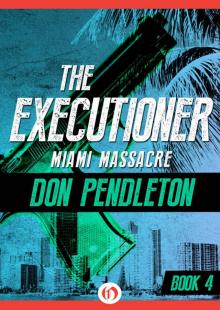 Miami Massacre
Miami Massacre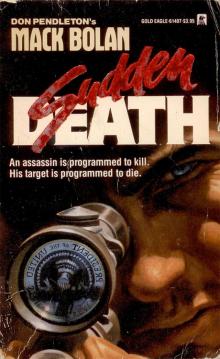 Sudden Death
Sudden Death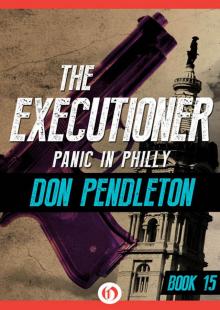 Panic in Philly
Panic in Philly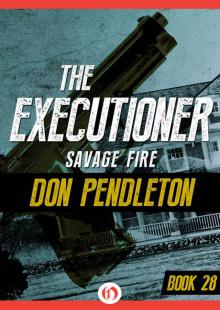 Savage Fire
Savage Fire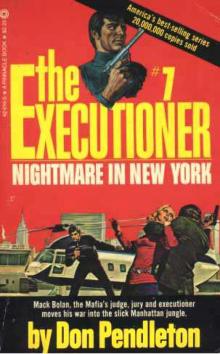 Nightmare in New York te-7
Nightmare in New York te-7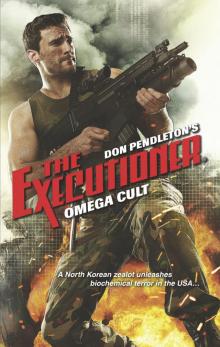 Omega Cult
Omega Cult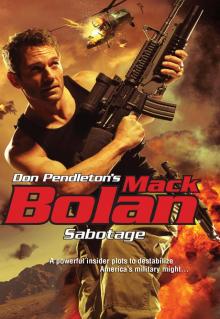 Sabotage
Sabotage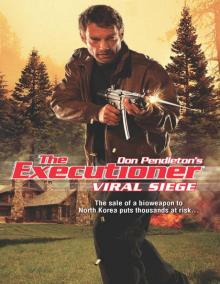 Viral Siege
Viral Siege War Tactic
War Tactic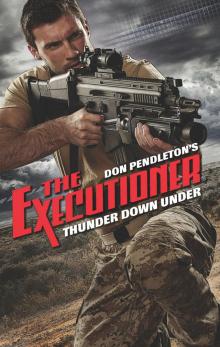 Thunder Down Under
Thunder Down Under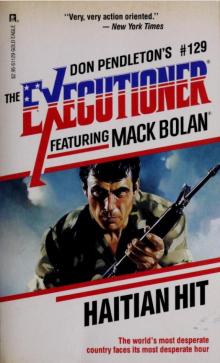 Haitian Hit
Haitian Hit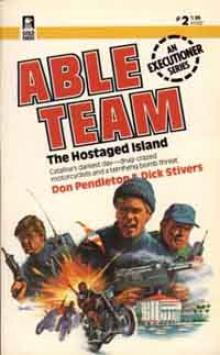 The Hostaged Island at-2
The Hostaged Island at-2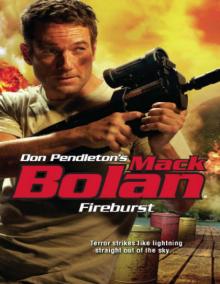 Fireburst
Fireburst The Killing Urge
The Killing Urge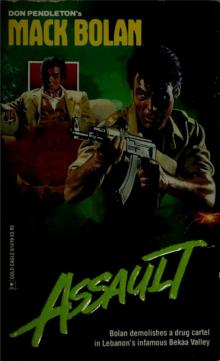 Assault
Assault Ashes To Ashes: Ashton Ford, Psychic Detective
Ashes To Ashes: Ashton Ford, Psychic Detective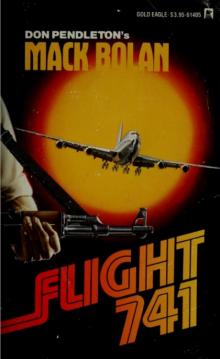 Flight 741
Flight 741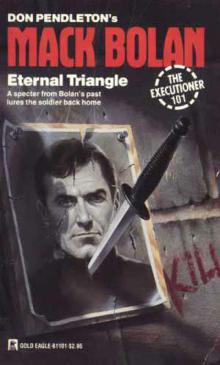 Eternal Triangle
Eternal Triangle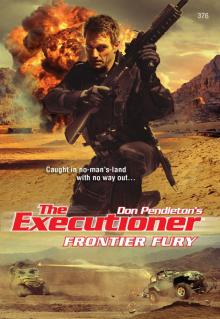 Frontier Fury
Frontier Fury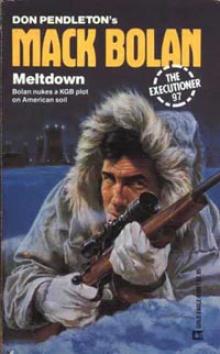 Meltdown te-97
Meltdown te-97 Chicago Wipeout
Chicago Wipeout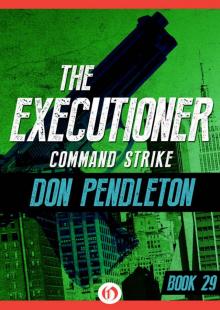 Command Strike
Command Strike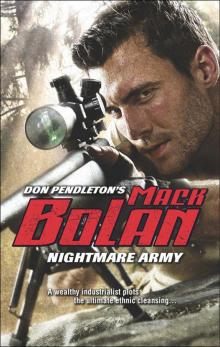 Nightmare Army
Nightmare Army Ivory Wave
Ivory Wave Combat Machines
Combat Machines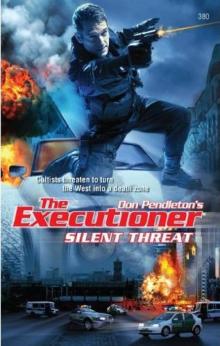 Silent Threat
Silent Threat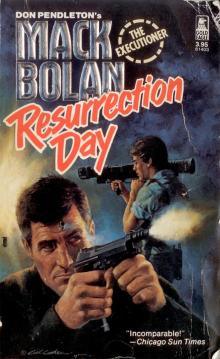 Resurrection Day
Resurrection Day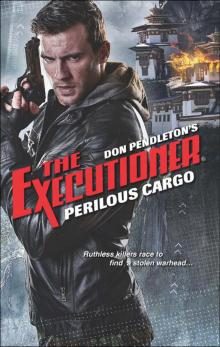 Perilous Cargo
Perilous Cargo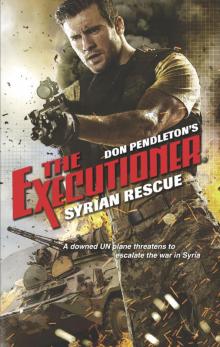 Syrian Rescue
Syrian Rescue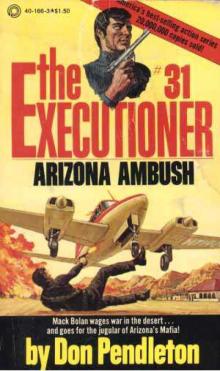 Arizona Ambush te-31
Arizona Ambush te-31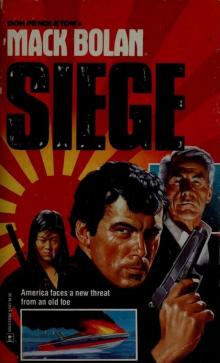 Siege
Siege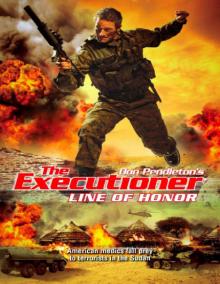 Line of Honor
Line of Honor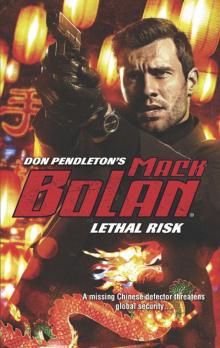 Lethal Risk
Lethal Risk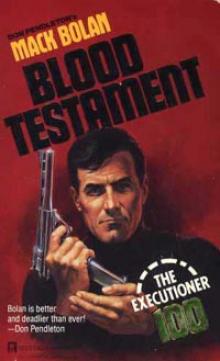 Blood Testament te-100
Blood Testament te-100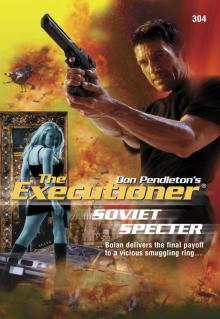 Soviet Specter
Soviet Specter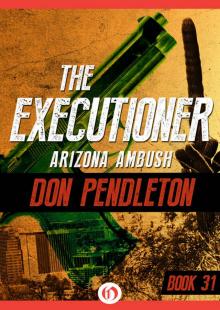 Arizona Ambush
Arizona Ambush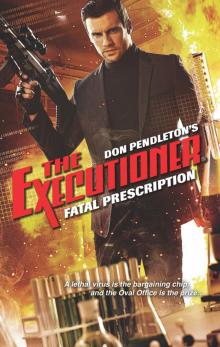 Fatal Prescription
Fatal Prescription Deep Recon
Deep Recon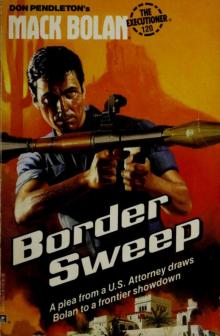 Border Sweep
Border Sweep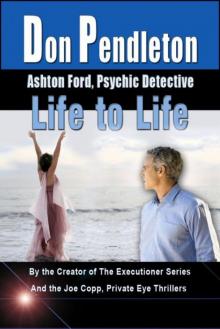 Life to Life
Life to Life Ballistic
Ballistic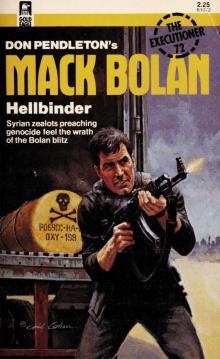 Hellbinder
Hellbinder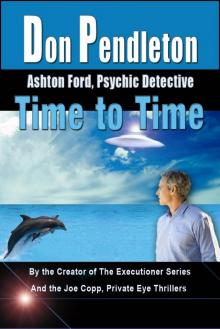 Time to Time: Ashton Ford, Psychic Detective (Ashton Ford Series Book 6)
Time to Time: Ashton Ford, Psychic Detective (Ashton Ford Series Book 6)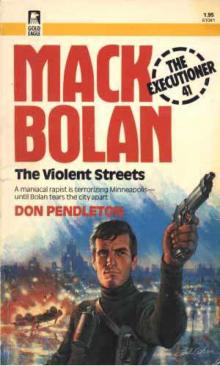 The Violent Streets te-41
The Violent Streets te-41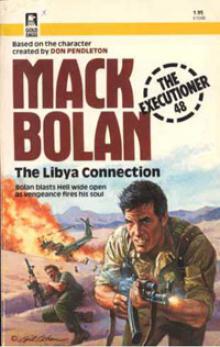 The Libya Connection te-48
The Libya Connection te-48 Cartel Clash
Cartel Clash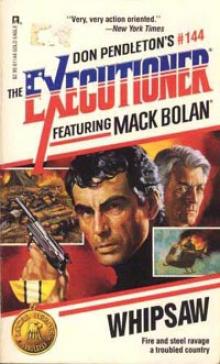 Whipsaw te-144
Whipsaw te-144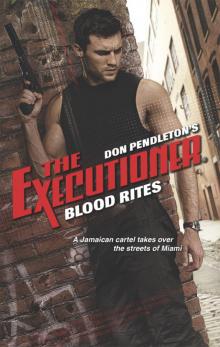 Blood Rites
Blood Rites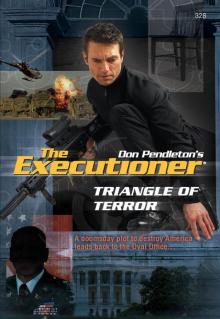 Triangle of Terror
Triangle of Terror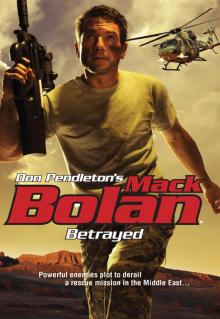 Betrayed
Betrayed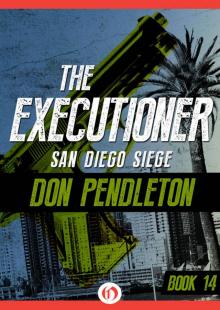 San Diego Siege
San Diego Siege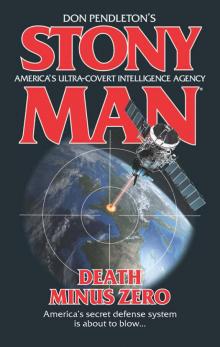 Death Minus Zero
Death Minus Zero Arctic Kill
Arctic Kill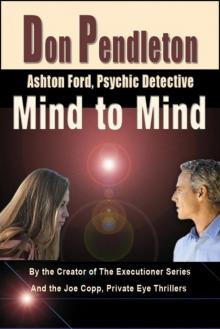 Mind to Mind: Ashton Ford, Psychic Detective
Mind to Mind: Ashton Ford, Psychic Detective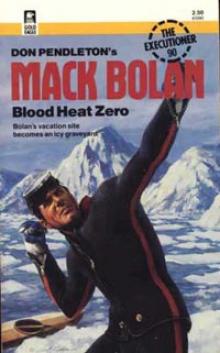 Blood Heat Zero te-90
Blood Heat Zero te-90 Dead Man's Tale
Dead Man's Tale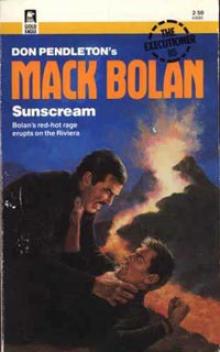 Sunscream te-85
Sunscream te-85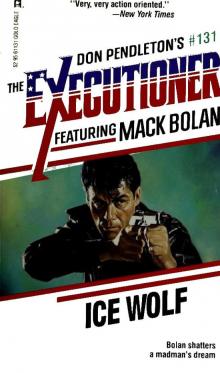 Ice Wolf
Ice Wolf Deadly Contact
Deadly Contact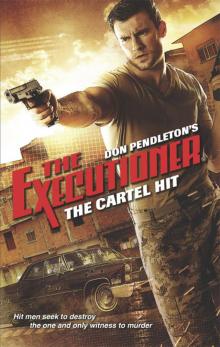 The Cartel Hit
The Cartel Hit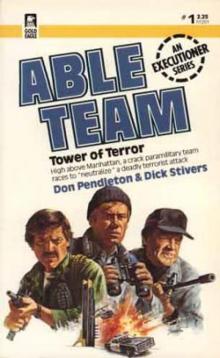 Tower of Terror at-1
Tower of Terror at-1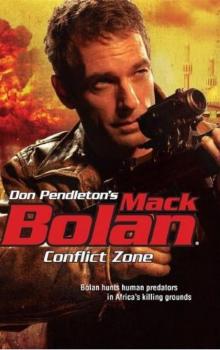 Conflict Zone
Conflict Zone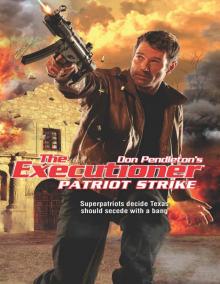 Patriot Strike
Patriot Strike Point Blank
Point Blank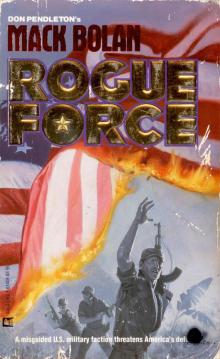 Rogue Force
Rogue Force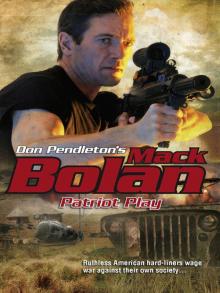 Patriot Play
Patriot Play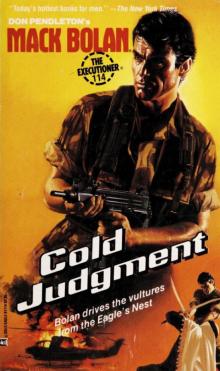 Cold Judgment
Cold Judgment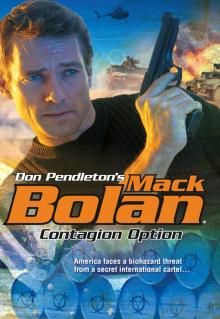 Contagion Option
Contagion Option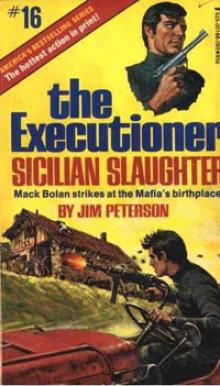 Sicilian Slaughter te-16
Sicilian Slaughter te-16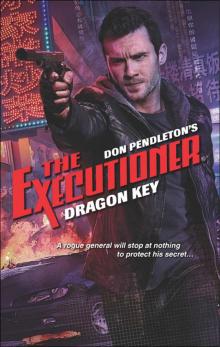 Dragon Key
Dragon Key Terminal Velocity
Terminal Velocity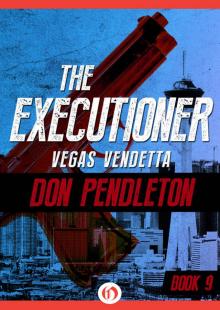 Vegas Vendetta
Vegas Vendetta Ashes To Ashes
Ashes To Ashes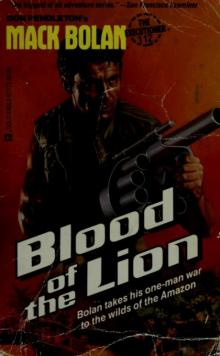 Blood of the Lion
Blood of the Lion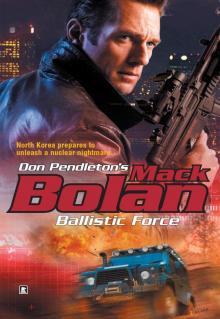 Ballistic Force
Ballistic Force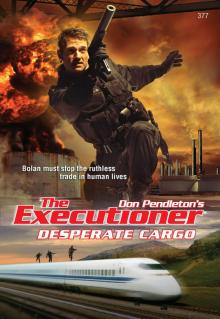 Desperate Cargo
Desperate Cargo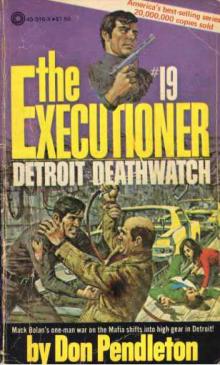 Detroit Deathwatch te-19
Detroit Deathwatch te-19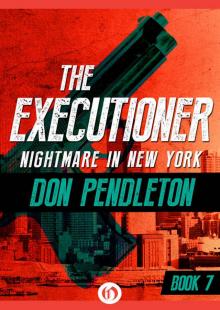 Nightmare in New York
Nightmare in New York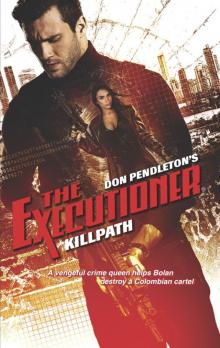 Killpath
Killpath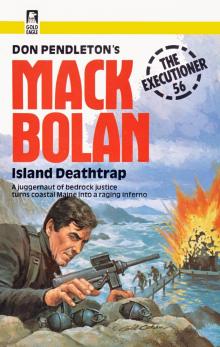 Executioner 056 - Island Deathtrap
Executioner 056 - Island Deathtrap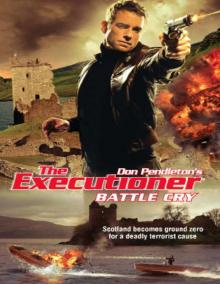 Battle Cry
Battle Cry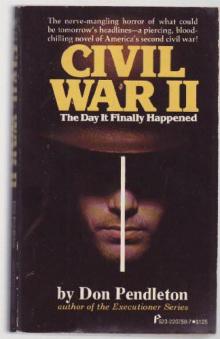 Don Pendleton - Civil War II
Don Pendleton - Civil War II Copp In The Dark, A Joe Copp Thriller (Joe Copp Private Eye Series)
Copp In The Dark, A Joe Copp Thriller (Joe Copp Private Eye Series) China Crisis (Stony Man)
China Crisis (Stony Man)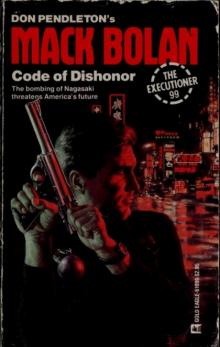 Code of Dishonor
Code of Dishonor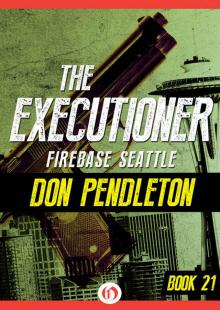 Firebase Seattle
Firebase Seattle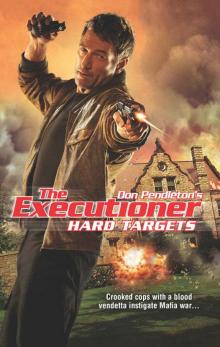 Hard Targets
Hard Targets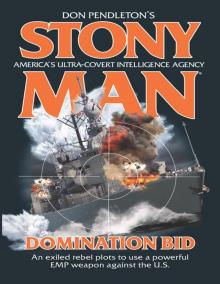 Domination Bid
Domination Bid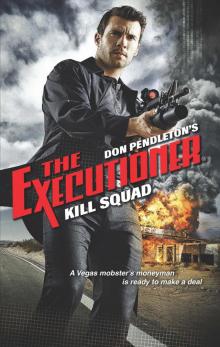 Kill Squad
Kill Squad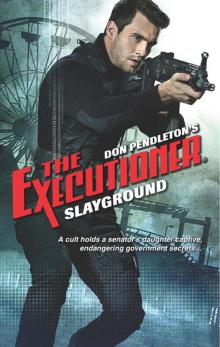 Slayground
Slayground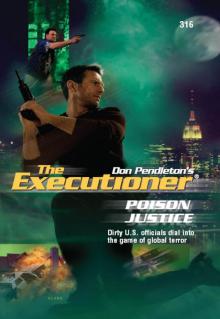 Poison Justice
Poison Justice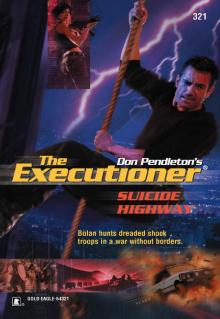 Suicide Highway
Suicide Highway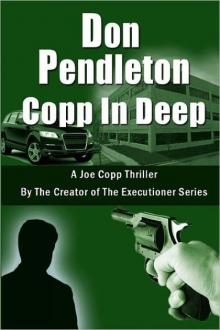 Copp In Deep, A Joe Copp Thriller (Joe Copp Private Eye Series)
Copp In Deep, A Joe Copp Thriller (Joe Copp Private Eye Series)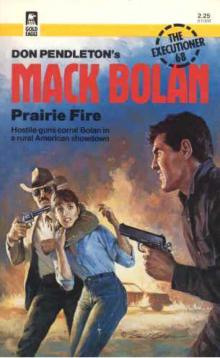 Prairie Fire
Prairie Fire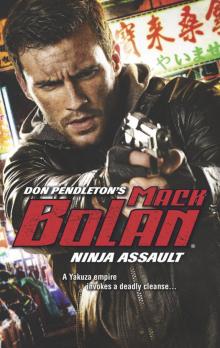 Ninja Assault
Ninja Assault Death Metal
Death Metal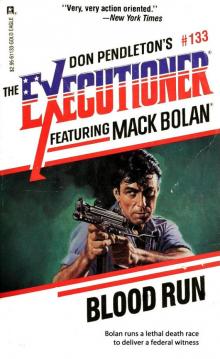 Blood Run
Blood Run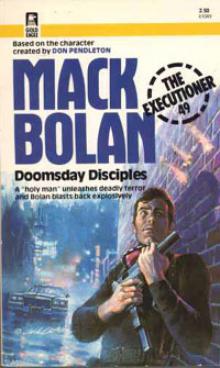 Doomsday Disciples te-49
Doomsday Disciples te-49 Breakout
Breakout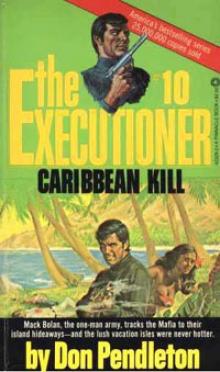 Caribbean Kill te-10
Caribbean Kill te-10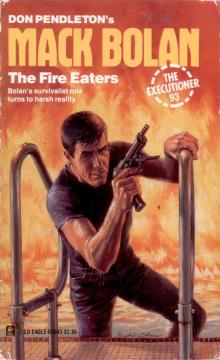 Fire Eaters
Fire Eaters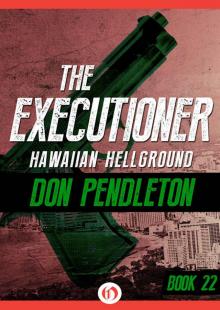 Hawaiian Hellground
Hawaiian Hellground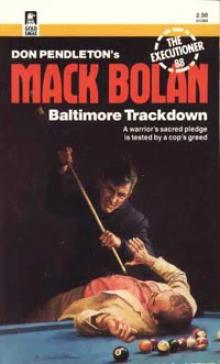 Baltimore Trackdown te-88
Baltimore Trackdown te-88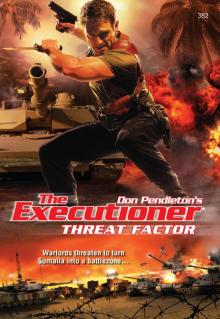 Threat Factor
Threat Factor Don Pendleton's Science Fiction Collection, 3 Books Box Set, (The Guns of Terra 10; The Godmakers; The Olympians)
Don Pendleton's Science Fiction Collection, 3 Books Box Set, (The Guns of Terra 10; The Godmakers; The Olympians) Satan’s Sabbath
Satan’s Sabbath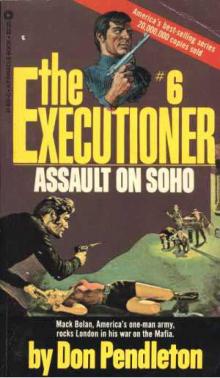 Assault on Soho te-6
Assault on Soho te-6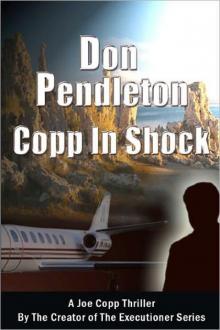 Copp In Shock, A Joe Copp Thriller (Joe Copp Private Eye Series)
Copp In Shock, A Joe Copp Thriller (Joe Copp Private Eye Series) California Hit te-11
California Hit te-11 Chicago Wipe-Out te-8
Chicago Wipe-Out te-8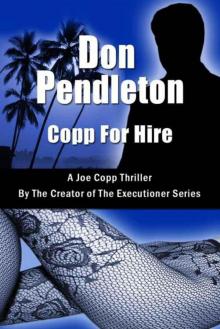 Copp For Hire, A Joe Copp Thriller (Joe Copp Private Eye Series)
Copp For Hire, A Joe Copp Thriller (Joe Copp Private Eye Series)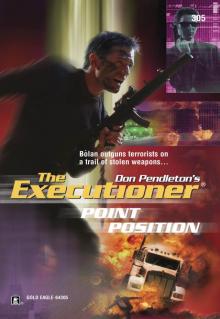 Point Position
Point Position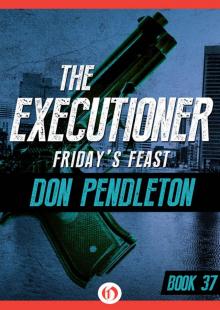 Friday’s Feast
Friday’s Feast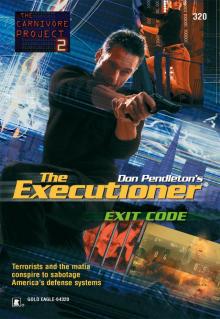 Exit Code
Exit Code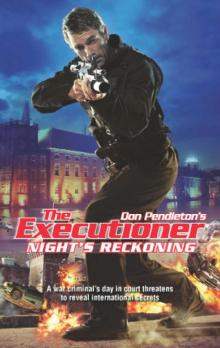 Night's Reckoning
Night's Reckoning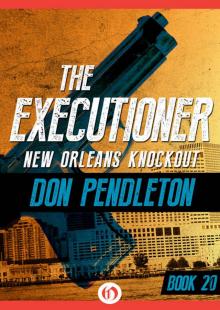 New Orleans Knockout
New Orleans Knockout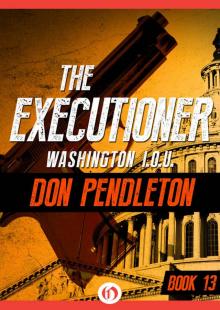 Washington I.O.U.
Washington I.O.U. California Hit
California Hit Blood Vendetta
Blood Vendetta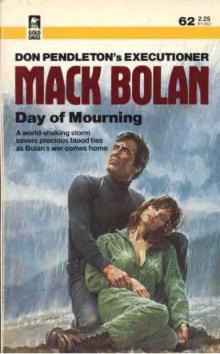 Day of Mourning te-62
Day of Mourning te-62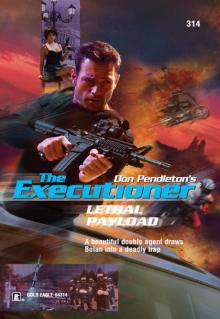 Lethal Payload
Lethal Payload Boston Blitz
Boston Blitz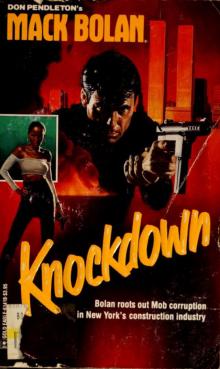 Knockdown
Knockdown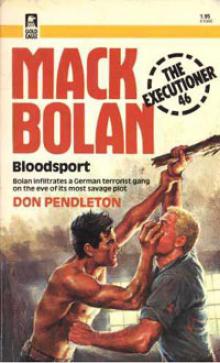 Blood Sport te-46
Blood Sport te-46 Council of Kings te-79
Council of Kings te-79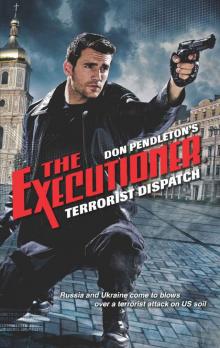 Terrorist Dispatch (Executioner)
Terrorist Dispatch (Executioner)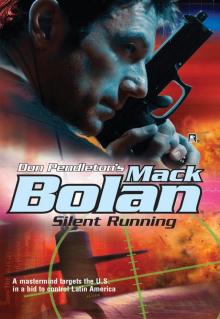 Silent Running
Silent Running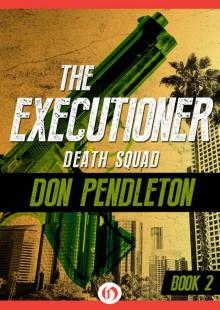 Death Squad
Death Squad Deadly Salvage
Deadly Salvage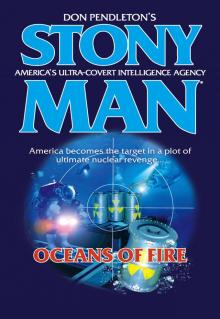 Oceans of Fire
Oceans of Fire Teheran Wipeout
Teheran Wipeout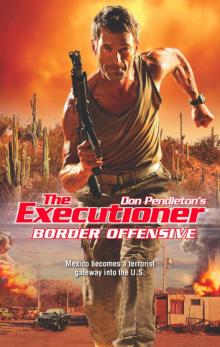 Border Offensive
Border Offensive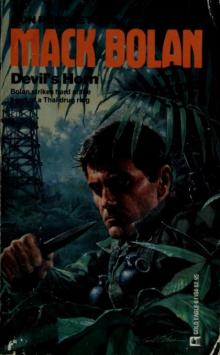 Devil's Horn
Devil's Horn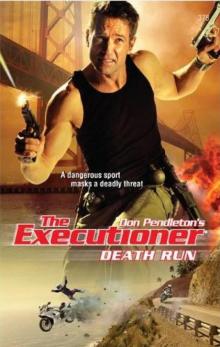 Death Run
Death Run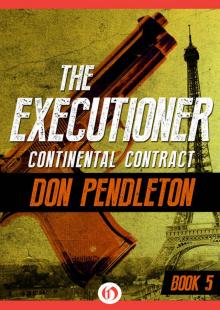 Continental Contract
Continental Contract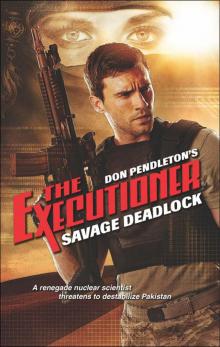 Savage Deadlock
Savage Deadlock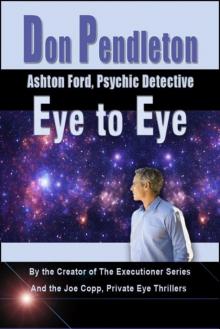 Eye to Eye: Ashton Ford, Psychic Detective
Eye to Eye: Ashton Ford, Psychic Detective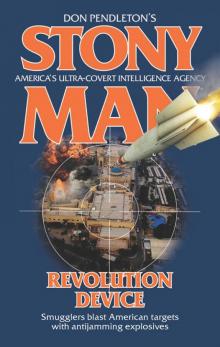 Revolution Device
Revolution Device Heart to Heart: Ashton Ford, Psychic Detective
Heart to Heart: Ashton Ford, Psychic Detective Apocalypse Ark
Apocalypse Ark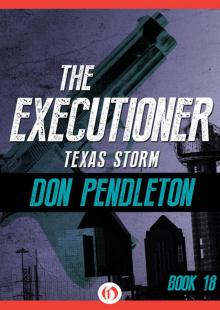 Texas Storm
Texas Storm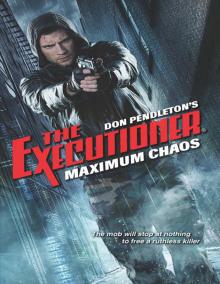 Maximum Chaos
Maximum Chaos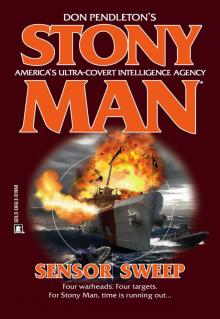 Sensor Sweep
Sensor Sweep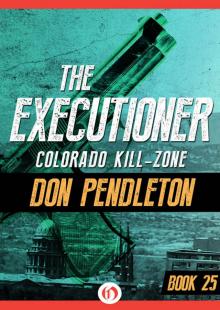 Colorado Kill-Zone
Colorado Kill-Zone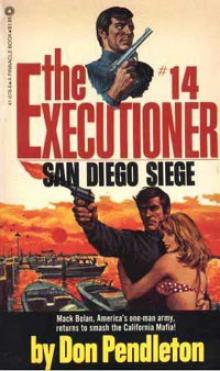 San Diego Siege te-14
San Diego Siege te-14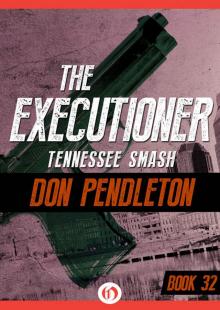 Tennessee Smash
Tennessee Smash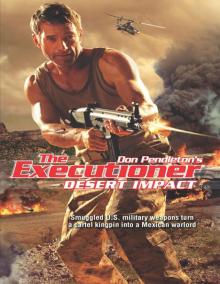 Desert Impact
Desert Impact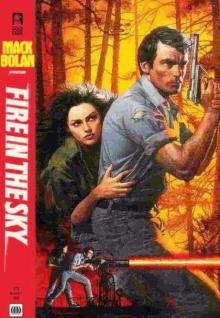 Fire in the Sky
Fire in the Sky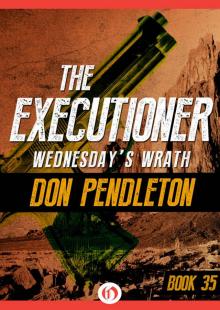 Wednesday’s Wrath
Wednesday’s Wrath Super Bolan - 001 - Stony Man Doctrine
Super Bolan - 001 - Stony Man Doctrine Chain Reaction
Chain Reaction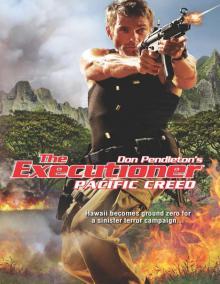 Pacific Creed
Pacific Creed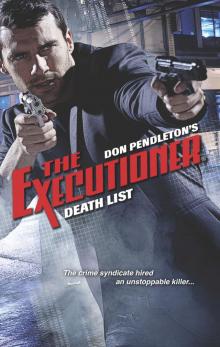 Death List
Death List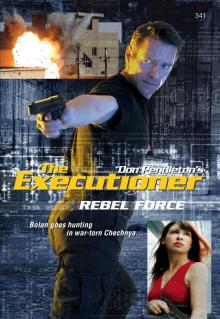 Rebel Force
Rebel Force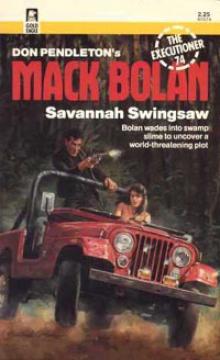 Savannah Swingsaw te-74
Savannah Swingsaw te-74 Heart to Heart
Heart to Heart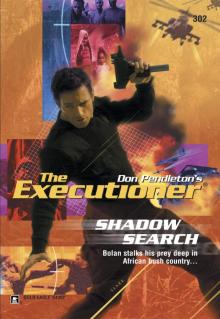 Shadow Search
Shadow Search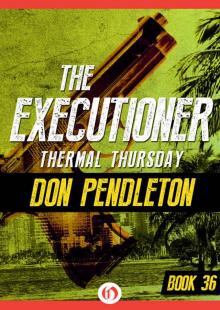 Thermal Thursday
Thermal Thursday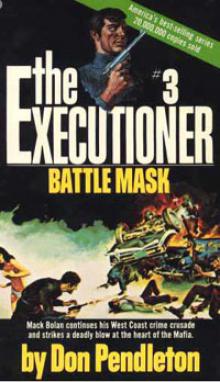 Battle Mask te-3
Battle Mask te-3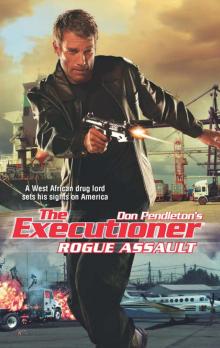 Rogue Assault
Rogue Assault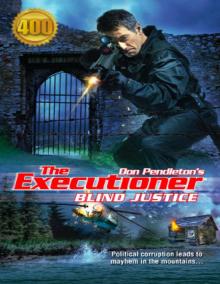 Blind Justice
Blind Justice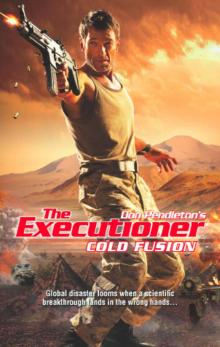 Cold Fusion
Cold Fusion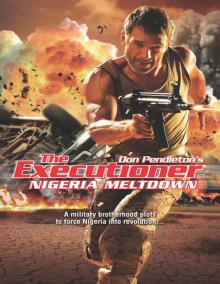 Nigeria Meltdown
Nigeria Meltdown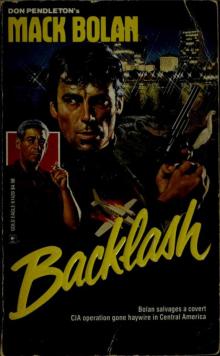 Backlash
Backlash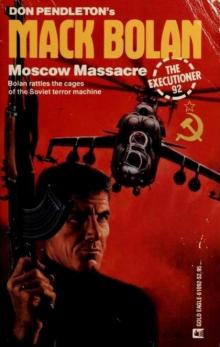 Moscow Massacre
Moscow Massacre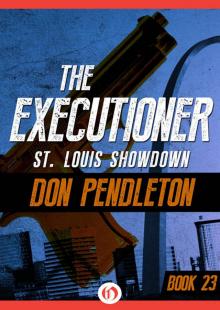 St. Louis Showdown
St. Louis Showdown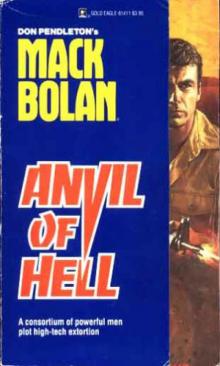 Anvil of Hell
Anvil of Hell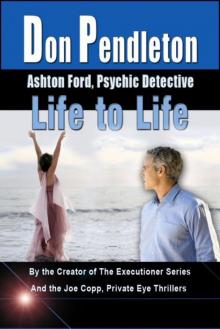 Life to Life: Ashton Ford, Psychic Detective
Life to Life: Ashton Ford, Psychic Detective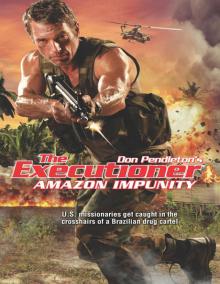 Amazon Impunity
Amazon Impunity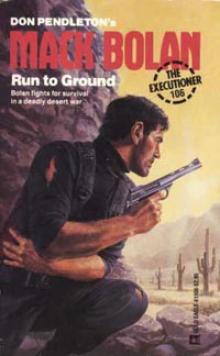 Run to Ground te-106
Run to Ground te-106 Save the Children te-94
Save the Children te-94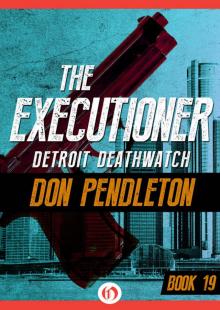 Detroit Deathwatch
Detroit Deathwatch Shadow Hunt
Shadow Hunt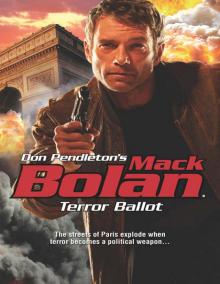 Terror Ballot
Terror Ballot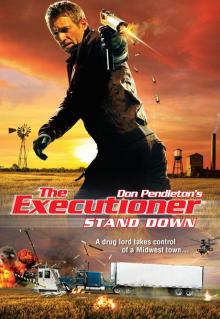 Stand Down
Stand Down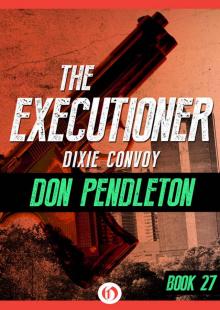 Dixie Convoy
Dixie Convoy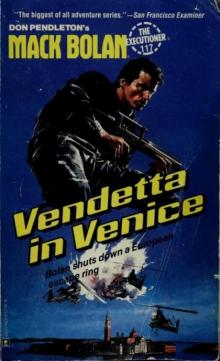 Vendetta in Venice
Vendetta in Venice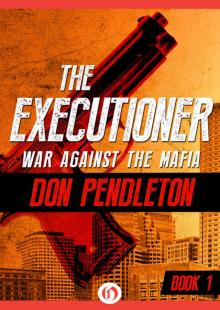 War Against the Mafia
War Against the Mafia Assassin's Tripwire
Assassin's Tripwire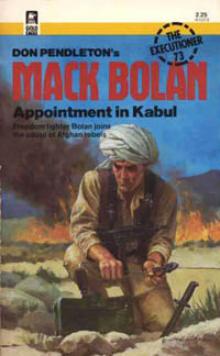 Appointment in Kabul te-73
Appointment in Kabul te-73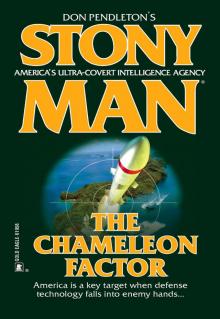 The Chameleon Factor
The Chameleon Factor Pirate Offensive
Pirate Offensive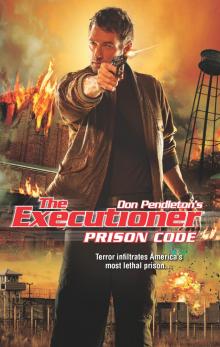 Prison Code
Prison Code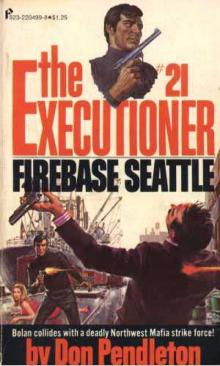 Firebase Seattle te-21
Firebase Seattle te-21 Ground Zero
Ground Zero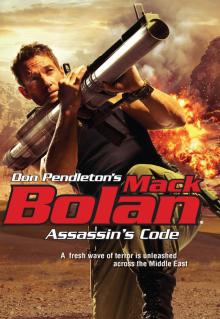 Assassin's Code
Assassin's Code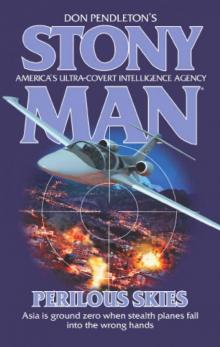 Perilous Skies (Stony Man)
Perilous Skies (Stony Man)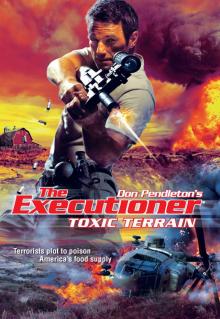 Toxic Terrain
Toxic Terrain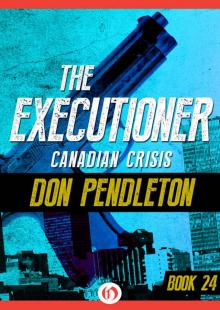 Canadian Crisis
Canadian Crisis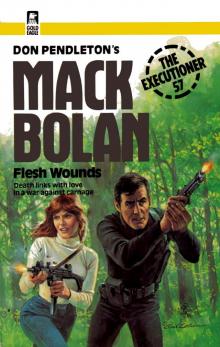 Executioner 057 - Flesh Wounds
Executioner 057 - Flesh Wounds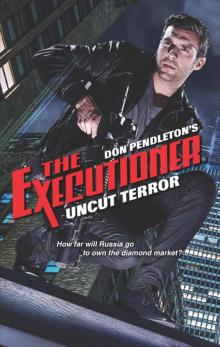 Uncut Terror
Uncut Terror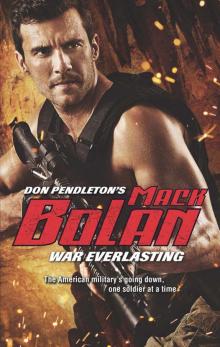 War Everlasting (Superbolan)
War Everlasting (Superbolan)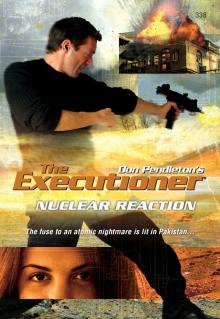 Nuclear Reaction
Nuclear Reaction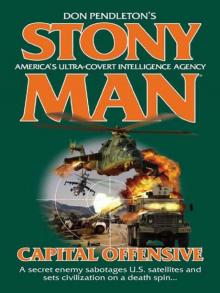 Capital Offensive (Stony Man)
Capital Offensive (Stony Man)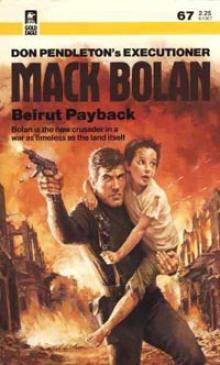 Beirut Payback te-67
Beirut Payback te-67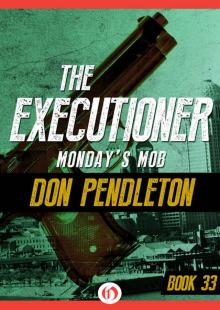 Monday’s Mob
Monday’s Mob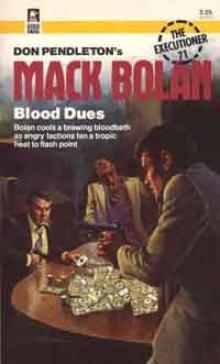 Blood Dues te-71
Blood Dues te-71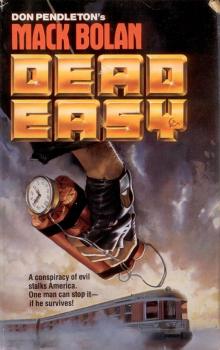 Dead Easy
Dead Easy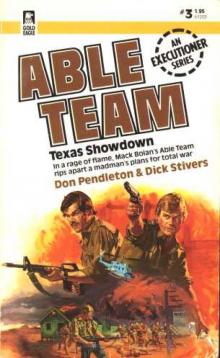 Texas Showdown at-3
Texas Showdown at-3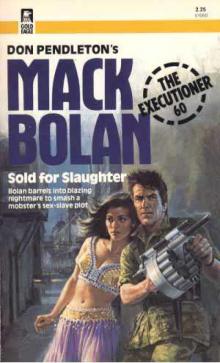 Sold for Slaughter
Sold for Slaughter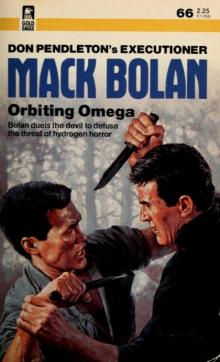 Orbiting Omega
Orbiting Omega Copp On Ice, A Joe Copp Thriller (Joe Copp Private Eye Series)
Copp On Ice, A Joe Copp Thriller (Joe Copp Private Eye Series)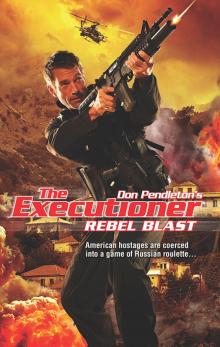 Rebel Blast
Rebel Blast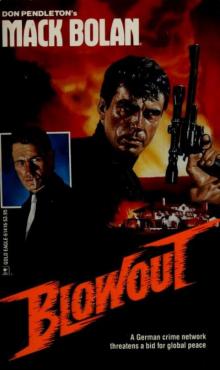 Blowout
Blowout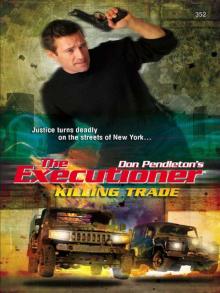 Killing Trade
Killing Trade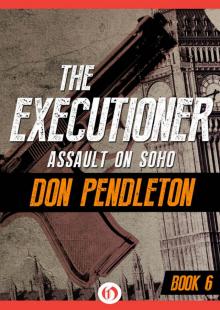 Assault on Soho
Assault on Soho Season of Slaughter
Season of Slaughter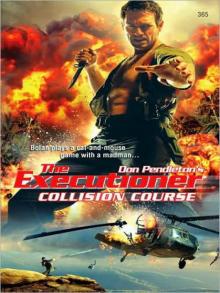 Collision Course
Collision Course Shock Waves
Shock Waves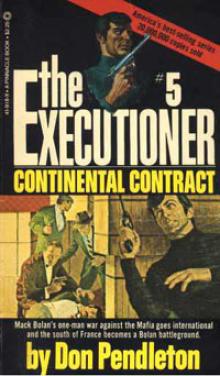 Continental Contract te-5
Continental Contract te-5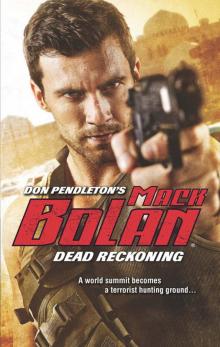 Dead Reckoning
Dead Reckoning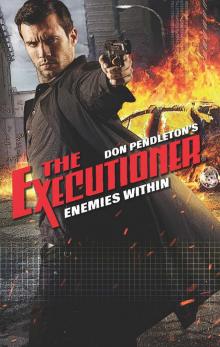 Enemies Within
Enemies Within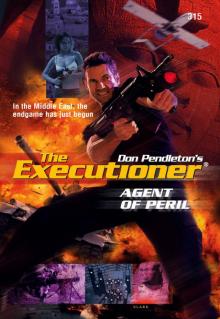 Agent of Peril
Agent of Peril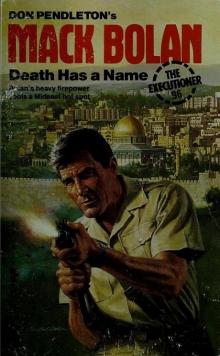 Death Has a Name
Death Has a Name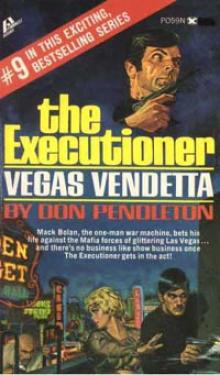 Vegas Vendetta te-9
Vegas Vendetta te-9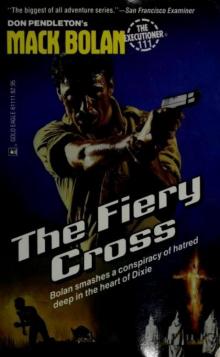 The Fiery Cross
The Fiery Cross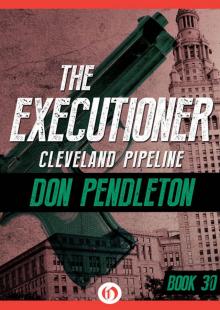 Cleveland Pipeline
Cleveland Pipeline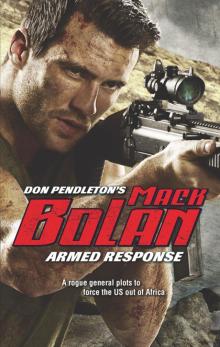 Armed Response
Armed Response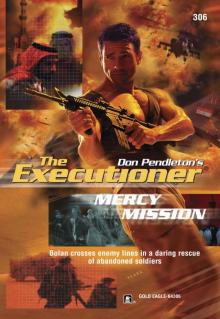 Mercy Mission
Mercy Mission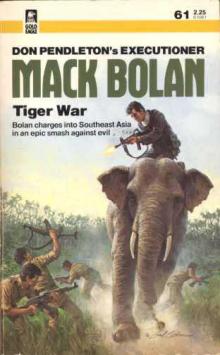 Tiger War te-61
Tiger War te-61 Renegade Agent te-47
Renegade Agent te-47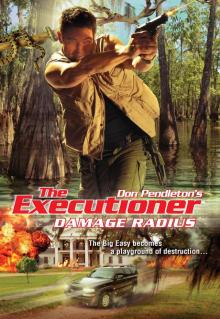 Damage Radius
Damage Radius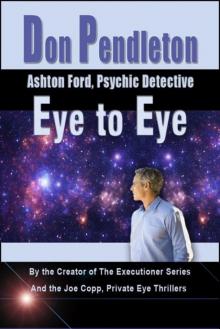 Eye to Eye
Eye to Eye Acapulco Rampage
Acapulco Rampage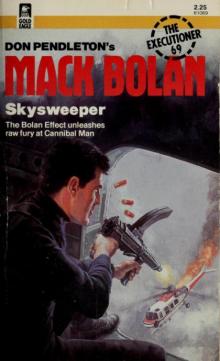 Skysweeper
Skysweeper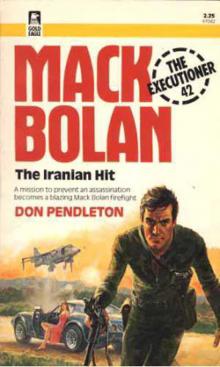 The Iranian Hit te-42
The Iranian Hit te-42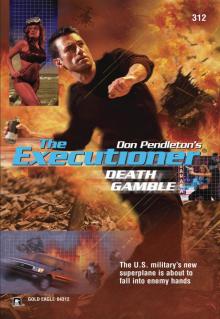 Death Gamble
Death Gamble Rebel Trade
Rebel Trade Predator Paradise
Predator Paradise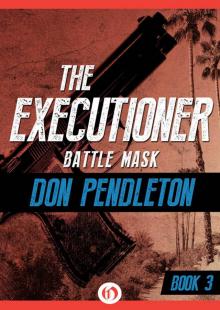 Battle Mask
Battle Mask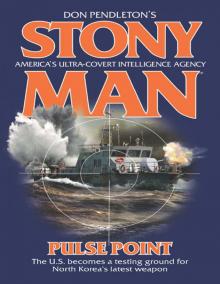 Pulse Point
Pulse Point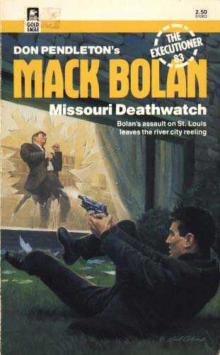 Missouri Deathwatch
Missouri Deathwatch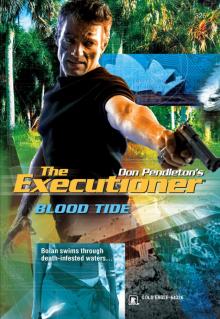 Blood Tide
Blood Tide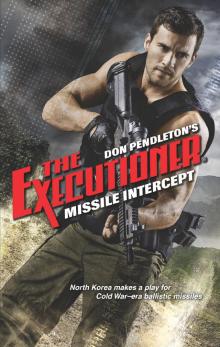 Missile Intercept
Missile Intercept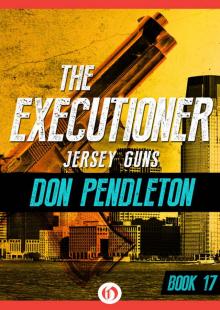 Jersey Guns
Jersey Guns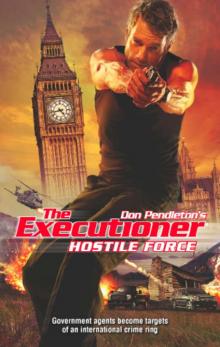 Hostile Force
Hostile Force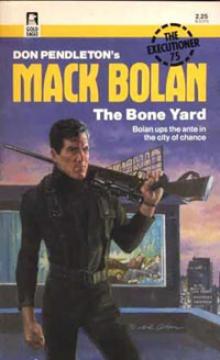 The Bone Yard te-75
The Bone Yard te-75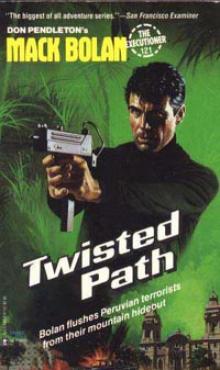 Twisted Path te-121
Twisted Path te-121 Mind to Mind
Mind to Mind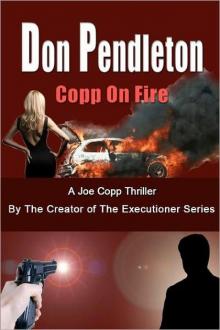 Copp On Fire, A Joe Copp Thriller (Joe Copp, Private Eye Series)
Copp On Fire, A Joe Copp Thriller (Joe Copp, Private Eye Series)